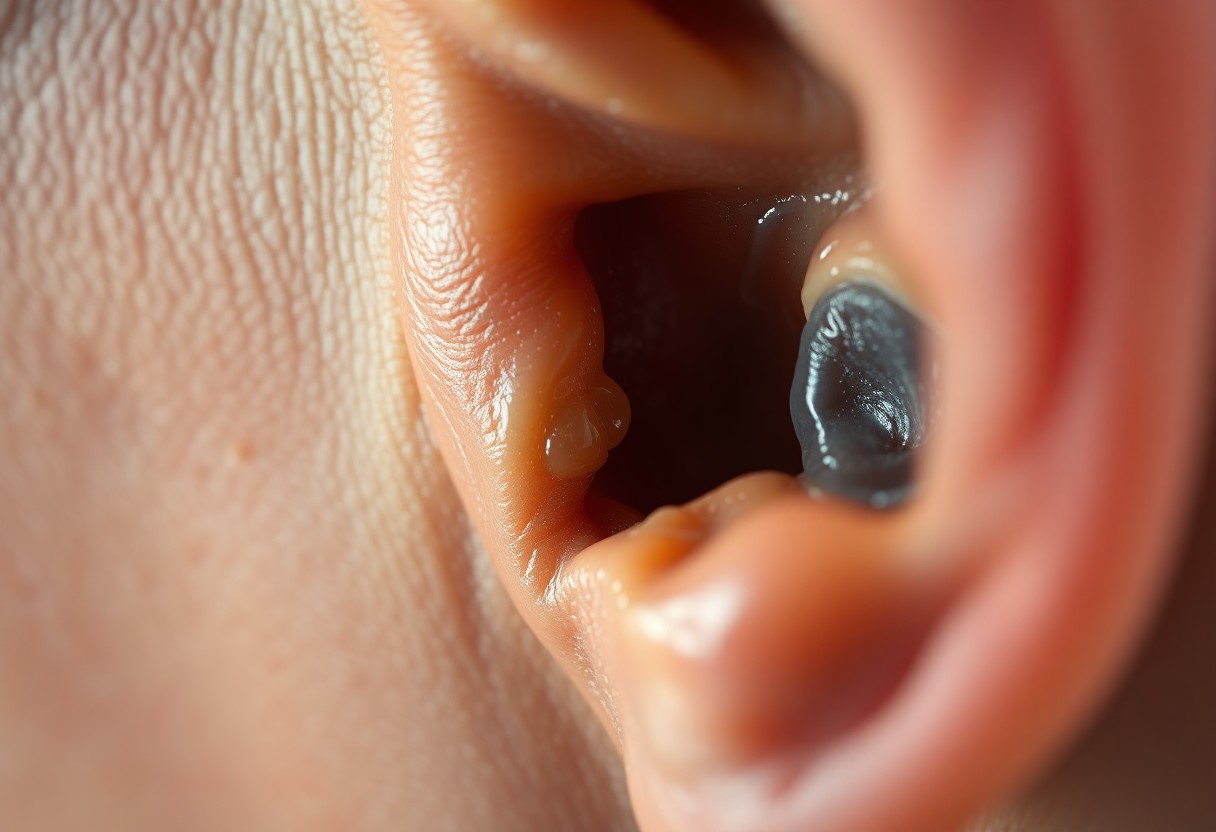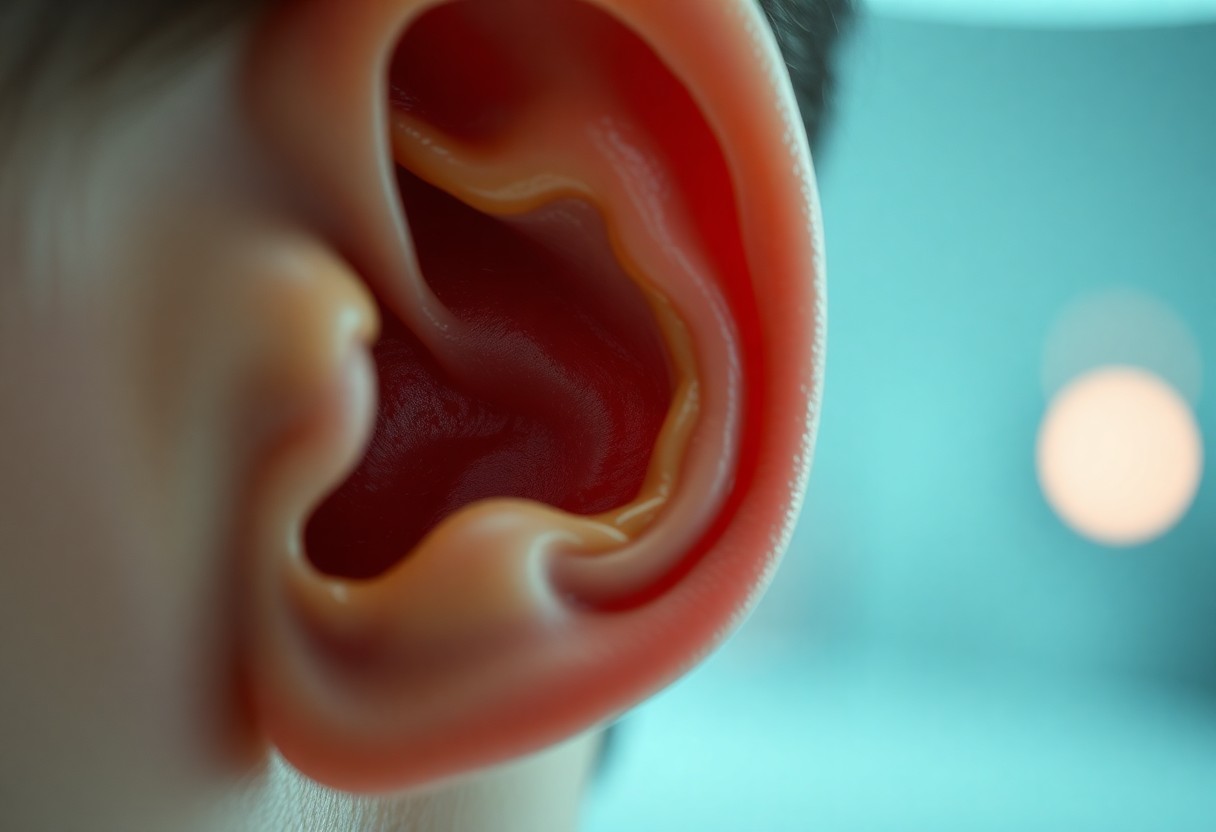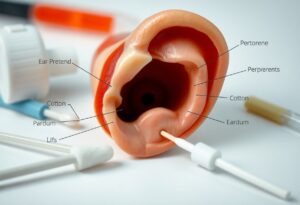Just as your skin has sebaceous glands that produce oil, your ears contain ceruminous glands that generate earwax. This natural waxy substance plays a vital role in protecting your ears from debris, bacteria, and moisture. Understanding how these glands function can help you appreciate the importance of earwax in maintaining your ear health. In this post, you will learn about the anatomy and purpose of these glands, as well as how they contribute to effective ear hygiene.

Key Takeaways:
- Sebaceous glands produce oil to moisturize ear canal and prevent dryness.
- Ceruminous glands secrete earwax (cerumen), which traps debris and has antibacterial properties.
- Both gland types work together to maintain ear health and protect from infections.
The Anatomy of Sebaceous and Ceruminous Glands
Structure and Location
Sebaceous glands are small, sac-like structures located within the dermis of your skin, often associated with hair follicles. These glands are predominantly found on the face, scalp, and upper body, while ceruminous glands reside in the external auditory canal. Ceruminous glands produce a waxy substance known as cerumen, working in conjunction with sebaceous glands to maintain a healthy ear environment and provide barrier functions against foreign particles.
The Role of Sebaceous Glands in Skin Health
Your sebaceous glands play a vital role in maintaining your skin’s health by producing sebum, an oily substance that prevents dryness and protects the skin’s barrier. This natural oil contains fatty acids and lipids that not only moisturize but also provide antibacterial properties, reducing the risk of skin infections.
The Unique Contribution of Ceruminous Glands
How Ceruminous Glands Produce Earwax
Ceruminous glands, located in the outer ear canal, secrete a thick, yellowish substance known as cerumen or earwax. These tubular glands respond to various stimuli, such as foreign particles or moisture, prompting them to produce and excrete earwax. The secretion process involves the synthesis of lipids and proteins, which then combine to form this unique protective substance. Your body relies on these glands to maintain ear health by continuously producing cerumen that traps dust, debris, and microorganisms.
The Composition and Properties of Earwax
Cerumen is a complex mixture of fatty acids, alcohols, squalene, and cholesterol. This composition gives earwax its waxy texture and creates an inhospitable environment for pathogens. The slightly acidic pH of earwax, typically between 6.0 and 7.0, further enhances its antimicrobial properties, making your ears less susceptible to infections while also hydrating and protecting the skin of the ear canal.
Understanding the intricate makeup of earwax deepens your appreciation for its protective role. Comprising approximately 20% lipids, including triglycerides, free fatty acids, and cholesterol, along with proteins and inorganic salts, cerumen forms a barrier against external irritants. The presence of antimicrobial compounds and enzymes in earwax contributes to its ability to neutralize bacteria and fungi, ensuring that your ears remain healthy despite exposure to the environment. Furthermore, the consistency of earwax can vary based on genetics and environmental factors, influencing its effectiveness in protecting your ear canal.
The Evolutionary Significance of Earwax
How Earwax Protects Against Infections
Earwax serves as a natural barrier against bacteria, fungi, and other pathogens. Its acidic pH and antimicrobial properties create an inhospitable environment for potential invaders. By trapping foreign particles and microorganisms, earwax effectively reduces the risk of infections within your ear canal, promoting overall ear health.
Earwax as a Signaling Mechanism in Nature
In the animal kingdom, earwax offers more than just protection; it can communicate vital information. Many species utilize chemical signals found in earwax to convey health status, reproductive fitness, or territorial claims, impacting social interactions and mate selection.
Numerous studies highlight that certain mammals, like mice and voles, produce unique compounds in their earwax that are linked to reproductive signaling. For example, male mice release specific pheromones through their earwax that can attract females or deter rival males. This chemical communication enhances reproductive success and ensures the continuation of their genetic lineage. The evolutionary advantages of such behaviors reveal the broader implications of a substance often overlooked in human biology.
The Interplay Between Gland Function and Hearing Health
The Role of Earwax in Hearing Aid Users
For hearing aid users, earwax presents a unique challenge. When earwax accumulates, it can block sound from entering the hearing aid, potentially resulting in feedback or reduced amplification. Regular cleaning and maintenance of both the hearing aid and the ear canal are vital to ensure optimal performance. You might consider scheduling frequent check-ups with your audiologist to address wax buildup and receive tailored advice for managing earwax effectively.
When Glands Misfire: Impact of Excessive Wax Production
Excessive earwax production can obstruct the ear canal, leading to hearing loss, discomfort, and even infections. This overproduction often results from various factors such as genetics, frequent use of cotton swabs, or changes in skin health. Signs of excessive wax include muffled hearing, a feeling of fullness in the ear, or even ringing sounds (tinnitus). You should seek medical guidance if you notice these symptoms to prevent further complications.
In cases where glands misfire, excessive wax production can create significant issues for your hearing health. An overabundance of cerumen may solidify, forming impactions that block sound waves from properly reaching the eardrum. This blockage often leads to temporary hearing loss and discomfort. Treatment typically involves professional cleaning by a healthcare provider, who may use methods such as irrigation or suction to safely remove the buildup. Left unaddressed, excessive wax can also create an environment conducive to infections, further complicating your ear health. Regular monitoring and proactive measures can mitigate these risks effectively.
Cleaning and Maintenance: Best Practices
Myths and Misconceptions about Ear Cleaning
Many believe that using cotton swabs is the best way to clean your ears, but this can push wax deeper into the canal, leading to blockages. Other misconceptions include the idea that earwax is always dirty or that it should be completely removed for optimal ear health. In reality, earwax serves important protective functions, and over-cleaning can lead to irritation and infection.
Safe Techniques for Ear Hygiene
Cleaning your ears can be done safely with a few simple techniques. Using a damp washcloth to wipe the outer ear is effective for general hygiene. You can also use over-the-counter ear drops to soften wax and facilitate natural drainage. Avoid inserting objects into the ear canal, as this can cause damage or push wax further in.
Incorporating safe techniques for ear hygiene into your routine enhances ear health significantly. A few drops of mineral oil or hydrogen peroxide can help soften excess wax, making it easier for it to exit the ear naturally. For those prone to excessive buildup, a scheduled visit to a healthcare professional for irrigation may be beneficial. This ensures any buildup is effectively managed without risking injury from DIY methods.

The Future of Ear Care: Innovations in Treatment
Emerging Technologies in Wax Removal
Innovative devices are transforming how you manage earwax buildup. Techniques like endoscopic ear wax removal are gaining traction, allowing for minimal invasiveness and improved accuracy. Additionally, ultrasonic technology offers non-contact methods to dissolve wax, reducing the need for manual extraction. These advancements aim to enhance comfort while ensuring effective care.
Research on Gland Function and Hearing Preservation
Understanding the role of sebaceous and ceruminous glands in hearing conservation is a burgeoning field of study. Researchers are investigating how gland function impacts the ear’s ability to protect and maintain auditory health. Insights from this research hold potential for developing targeted interventions that support ear health and auditory function.
Recent studies have shown that maintaining optimal gland function can contribute significantly to your hearing wellbeing. For instance, a study published in the Journal of Ear, Nose & Throat Research found that individuals with healthy ceruminous gland activity had a marked reduction in ear infections, showcasing the importance of wax in safeguarding against pathogens. Continued exploration into how these glands operate could lead to innovative treatments that not only improve wax management but also enhance overall ear health, potentially preventing hearing loss related to age or exposure to loud noises. This research paves the way for future approaches that combine effective wax management with preservation of your hearing capabilities.
The Cultural Perspective on Earwax
Earwax in Folklore and Tradition
Throughout history, earwax has found its way into various folklore and traditions. In some cultures, it is believed that earwax possesses healing properties, often being used in traditional medicine for ailments. For instance, certain Indigenous tribes view earwax as a protective substance, while in parts of Asia, it is used in rituals to symbolize purity or rebirth. These beliefs reflect a deep-rooted connection between bodily fluids and cultural identity, illustrating how earwax is perceived beyond its biological function.
Variability in Ear Hygiene Practices Across Cultures
Ear hygiene practices vary widely across different cultures, influenced by tradition, beliefs, and available technology. In some regions, individuals emphasize regular ear cleaning through cotton swabs or ear scoops, while in others, people avoid intruding into the ear canal altogether, trusting natural processes. For example, in Japan, ear cleaning is often a social activity among friends and family, showcasing cultural bonds. Conversely, some African tribes may see earwax as a sign of health, avoiding removal to maintain the body’s natural defenses.
This cultural diversity highlights how you approach ear hygiene can depend significantly on societal views. For instance, in Western countries, the use of cotton swabs is common; however, awareness campaigns are growing due to studies highlighting potential damage to ear canals. In contrast, in Southeast Asian cultures, ear candling remains a popular practice, thought to remove excess wax and impurities. Understanding these variations not only fosters respect for cultural practices but also encourages you to consider how global perspectives influence personal hygiene habits.
Summing up
Following this, you now understand that sebaceous and ceruminous glands work in tandem to produce earwax, which plays a vital role in protecting your ear canal. These glands contribute to the maintenance of ear health by preventing infections and trapping debris. By knowing this, you can appreciate the biological processes at work in your ears and the significance of proper ear care in your daily routine.
FAQ
Q: What are sebaceous and ceruminous glands?
A: Sebaceous glands are small oil-producing glands found in the skin that secrete sebum, which lubricates and protects the skin and hair. Ceruminous glands, located in the ear canal, produce earwax (cerumen) that helps trap dust and debris, preventing them from reaching the eardrum.
Q: How is earwax produced by ceruminous glands?
A: Ceruminous glands secrete a mixture of fatty acids, alcohols, and other substances that combine with dead skin cells. This mixture forms earwax, which helps to keep the ear canal moisturized and protected from infection.
Q: What is the function of earwax?
A: Earwax serves multiple purposes: it protects the ear canal by trapping dust and debris, provides a barrier against bacteria and fungi, and helps to maintain moisture in the ear canal, preventing dryness and irritation.
Q: Can sebaceous and ceruminous glands become blocked?
A: Yes, these glands can become blocked due to excess oil production, dead skin cells, and environmental factors. Blockage can lead to conditions such as seborrhea or impacted earwax, which may require medical intervention to resolve.
Q: What are the signs of problems with sebaceous or ceruminous glands?
A: Signs of issues include excessive earwax buildup, itching or irritation in the ear, pain, hearing loss, or discharge. If these symptoms occur, it is advisable to consult a healthcare professional for evaluation and treatment.



